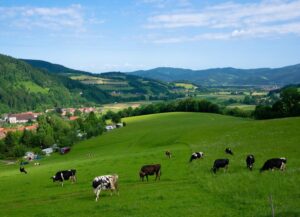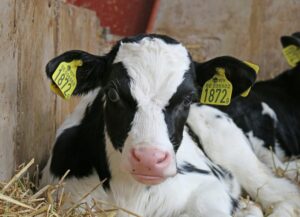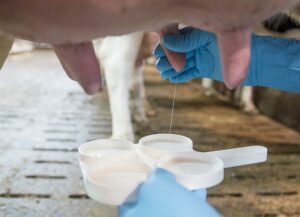Ishaya U. Gadzama & Fernando Diaz
Sources of non-protein nitrogen (NPN) such as urea or nitrate are attractive to include in the diet of ruminants because of their low cost relative to vegetable protein. The amount of NPN that can be used in diets however is limited due to their rapid hydrolysis to ammonia in the rumen. This results in a rapid peak in rumen ammonia concentration within the first hour after consumption. In addition, nitrate has been proposed as a feed additive to mitigate enteric methane emissions.
Recently, van Wyngaard et al. (2019) conducted a study at the Outeniqua Research Farm, University of Pretoria, South Africa, in which evaluated the effect of NPN supplementation on intake, milk yield and milk composition of grazing Jersey cows. The experimental cows were grazed on perennial ryegrass dominant pasture and supplemented daily at milking with 5.4 kg of dry matter (DM) of concentrates containing either urea (1.9% DM) or urea (0.95% DM) plus nitrate (1.5% DM).
The grazing area was composed by perennial ryegrass (Lolium perenne; 73%), other grass (Lolium multiflorum and Paspalum dilatatum; 17%), white clover (Trifolium repens; 10%), kikuyu (4%), and broad-leaf weeds (3%). On average, nutrient composition of the pasture was 21.9% DM protein, 49.3% DM neutral- and 28.0% DM acid-detergent-fiber, and 0.72% DM nitrates.
Total nitrate intake was 0.52 and 0.97% DM for the urea and nitrate groups, respectively. The results of this study showed that there was no difference in pasture intake (12.5 kg DM/day) and total DM intake (18.0 kg/day) between NPN sources. Interestingly, milk yield (19.0 kg/d), energy-corrected-milk (21.7 kg/day), and milk protein yield (0.70 kg/day) were not affected by concentrates. Although milk fat content was considerably higher (5.07%) in the cows that received the nitrate supplement than in cows fed the urea-based supplement (4.90%), milk fat yield was similar in both groups (0.94 kg/day).
Furthermore, higher milk urea nitrogen concentration (12.6 mg/dL) was observed in cows that received the nitrate supplement compared with the urea supplemented cows (11.6 mg/dL). Body weight, body condition score, and methane emissions (403 g/day); however, were unaffected by NPN source.
In conclusion, the results of this study indicate that nitrate appears to be a good source of NPN, and thus a potential substitute for urea in lactating cow grazing diets. Surprisingly, nitrate supplementation did not reduce methane emissions in this study. This may be due to the relative high nitrate concentration in the pasture.
Reference
van Wyngaard, J.D.V., Meeske, R., and Erasmus, L.J. 2019. Effect of Dietary Nitrate on Enteric Methane Emissions, Production Performance and Rumen Fermentation of Dairy Cows Grazing Ryegrass Pasture During Spring. Animal Feed Science and Technology, 252: 64 – 73.
© 2019 Dairy Knowledge Center, LLC. All Rights Reserved.








